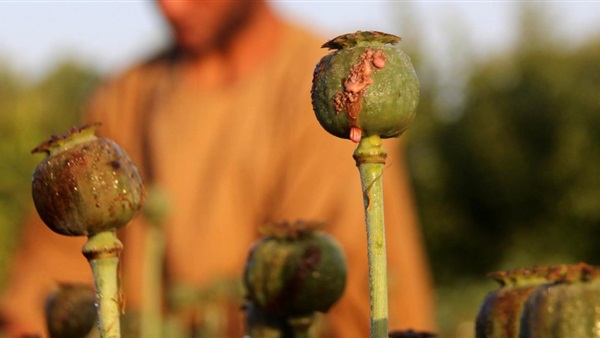Cash-strapped Taliban cannot afford to turn their back on opium trade

In Afghanistan’s southern Uruzgan province, Habibullah sat
and listened to a recording of drug dealers rattling off opium prices, one
after another, reminiscent of traders on the stock market.
He is just one of many Afghans who have escaped poverty
through the prolific Afghan opium trade, which has grown since British and
American forces fled the country and the Taliban swept to power in August 2021.
Research published by the UN in November looking at the
2021/22 opium harvest outlined a 32 per cent increase in opium cultivation
across the country since western forces fled Kabul. With the subsequent
economic collapse, and more than 90 per cent of Afghans facing some form of
food insecurity since the takeover, involvement in the drug trade has become
increasingly tempting.
“The number of people in this district of Uruzgan involved
in drug dealing has doubled since the Taliban took control,” said Habibullah*,
a district-level drug dealer in one of the country’s most conservative
provinces who has been dealing for three and a half years, alongside family
members.
“Many of the people
are former government and NGO workers who lost their jobs after the government
collapsed,” he claimed.
During their last stint in power in the late 1990s the
Taliban cracked down on the un-Islamic drugs trade, managing to reduce it by 90
per cent across the country. When they were ousted in 2001 by US forces, cultivation
resumed despite efforts by the newly installed Islamic Republic government to
curtail production. Now Afghanistan is the world’s largest producer of opium,
supplying about 80 per cent of the global opiate demand.
Since returning to power, the Taliban are looking to prove
they can tackle the issue again, announcing in April that they were cracking
down on the cultivation, trafficking and use of narcotics. This is partly
driven by pressure from neighbouring countries and others in the region to tackle
the issue of drug production and trafficking. In an interview with The Times,
Abdul Haq Akhund, deputy interior minister for counter-narcotics, pointed out
that many Afghans were suffering from drug addiction.
However, shortly after the ban was announced the Taliban
clarified that there would be a two-month grace period, after which time “the
ban would be rigorously applied”.
The US spent about $8.6 billion between 2002 and 2017 in its
fight to stifle the trade. Poppy crops were eradicated, heroin labs were the
target of raids and airstrikes, and alternative crop programmes were
implemented.
None of it worked; alternative crop programmes were not
sustainable, while those affected grew increasingly resentful of the Kabul
government and its international backers and increasingly sympathetic towards
the Taliban.
Habibullah believes the Taliban are mindful of the country’s
economic woes and are concerned about a backlash, so for now, a mixture of
newly cultivated opium and that of previous harvests is still coming to the
market.
Poppy farmers and opium dealers in Uruzgan say the local
authorities have destroyed poppy fields but are seemingly turning a blind eye
to the trading of opium. Bags of the tar-like substance can be seen openly
traded in a market just metres away from a police checkpoint in Uruzgan’s
district centre Tarin Kot.
Although attempts to ban the trade over the past two decades
resulted in hardship for many, there were more alternative job opportunities:
big developmental projects, Afghan migrant workers were more welcome in
neighbouring countries, and the army was always seeking recruits. Today the
situation is very different.
Prices have soared after the April announcement; a kilogram
of opium would fetch about £50 before the Taliban takeover in August 2021. Now
the same amount can be sold for between £300 and £525, depending on the region.
Farmers who have long grown poppies say no alternative is
being offered to them by the Taliban. Despite witnessing the destruction of
neighbours’ poppy fields, Ahmadullah* still planted poppy seeds this season,
albeit across a significantly smaller area compared with previous years.
Instead of splitting the family’s 4.5 acres of land between wheat for their
animals and poppies, his newly planted opium crop is now across 50 sq m, hidden
within a walled area of land.
“We have no choice but to keep growing poppies, especially
while the prices are so high. There’s no other way to make money to feed my
family,” said the farmer in his twenties, whose family has cultivated and
produced opium for four decades.









